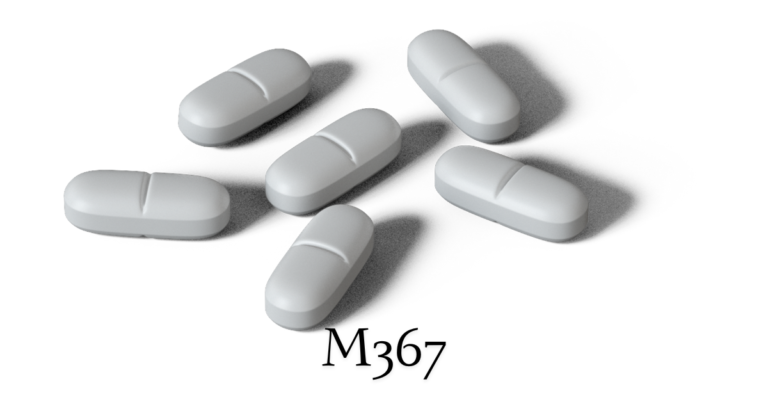The landscape of pain management is vast, with a myriad of medications tailored to alleviate discomfort. Among these, M367 stands out as a controlled substance utilized for its potent analgesic properties. However, its efficacy comes hand in hand with potential risks, making it imperative to comprehend its nuances, implications, and the measures available for managing its use.
Unveiling M367: A Blend of Hydrocodone and Acetaminophen
M367, recognized by its white, oval shape and debossed imprint, is a combination medication comprising hydrocodone bitartrate and acetaminophen. Hydrocodone, classified as an opioid analgesic, interacts with opioid receptors in the central nervous system to mitigate pain signals. In contrast, acetaminophen serves as a non-opioid analgesic with antipyretic properties, aiding in pain relief and fever reduction. This synergy is harnessed to address moderate to severe pain stemming from diverse sources, ranging from injuries to certain medical conditions.
Navigating the Legality and Administration of M367
The acquisition of M367 necessitates a valid prescription from a healthcare professional due to its status as a controlled substance. Typically available in oral tablet form, M367’s therapeutic dosage adheres to a specific ratio of hydrocodone bitartrate to acetaminophen, ensuring optimal pain management while minimizing risks of adverse effects.
While the prescribed use of M367 is predominantly oral, instances of misuse involve crushing the tablets for inhalation or injection, amplifying the potential for abuse and adverse outcomes. Recognizing these divergent administration methods is crucial in understanding the spectrum of risks associated with M367.
The Mechanisms of Action: Hydrocodone and Acetaminophen Dynamics
Hydrocodone, a central player in M367’s efficacy, binds to opioid receptors, curbing pain sensations and inducing a sense of euphoria, particularly at higher doses. This opioid-induced euphoria, albeit pleasurable, underscores the drug’s addictive potential and necessitates cautious administration under medical supervision.
Conversely, acetaminophen, devoid of addictive properties, complements hydrocodone’s analgesic effects by inhibiting pain-inducing prostaglandin production. Additionally, its antipyretic properties aid in fever reduction, contributing to M367’s multifaceted approach to pain management.
Navigating the Risks: Abuse, Dependence, and Overdose
The potency of M367 as an opioid necessitates vigilance regarding its potential for abuse and subsequent dependence. Prolonged or excessive usage beyond prescribed guidelines heightens the risk of addiction, characterized by physical and psychological reliance on the drug for pain relief.
Moreover, the risk of overdose looms large, particularly when M367 is abused in higher doses or combined with other substances. Opioid overdoses manifest through symptoms such as respiratory depression, cardiovascular complications, and central nervous system depression, necessitating immediate medical intervention to avert fatal outcomes.
Identifying Adverse Effects and Managing Challenges
The adverse effects associated with M367 encompass a spectrum of symptoms ranging from mild to severe. Commonly reported adverse reactions include dizziness, nausea, and lethargy, reflecting the drug’s impact on the central nervous system. Moreover, psychological dependence, characterized by fear and anxiety in the absence of the drug, underscores the complex interplay between opioids and mental health.
Addressing these challenges requires a comprehensive approach encompassing detoxification, withdrawal management, and therapeutic interventions. Turning Point of Tampa, a leading addiction treatment center, offers specialized programs tailored to address substance abuse disorders, including those stemming from opioid medications like M367.
Navigating Treatment Pathways: Detoxification and Therapeutic Interventions
Detoxification serves as the initial phase in addressing M367 dependence, aiming to rid the body of accumulated opioids while managing withdrawal symptoms effectively. Medical supervision, coupled with tailored interventions, ensures a safe and supportive detoxification process, setting the stage for subsequent therapeutic interventions.
Therapeutic modalities, including cognitive-behavioral therapy, group therapy, and motivational interviewing, play a pivotal role in addressing the psychological aspects of addiction, aiding individuals in navigating triggers, coping mechanisms, and relapse prevention strategies.
The Role of Turning Point of Tampa: Empowering Recovery
Turning Point of Tampa’s holistic approach to addiction treatment encompasses detoxification, therapeutic interventions, and ongoing support, empowering individuals to embark on a journey of recovery and reclaim their lives. With a multidisciplinary team comprising addiction specialists, psychiatrists, and medical professionals, Turning Point of Tampa offers a continuum of care tailored to individual needs, ensuring a comprehensive and personalized recovery experience.
Empowering Recovery: Seeking Help and Embracing Healing
For individuals grappling with M367 abuse or dependence, seeking help is the first step towards healing and recovery. Turning Point of Tampa’s compassionate and evidence-based approach to addiction treatment provides a beacon of hope, guiding individuals towards a life free from the shackles of substance abuse.
Conclusion
In conclusion, unraveling the complexities of M367 entails understanding its mechanisms, risks, and treatment pathways. With informed decision-making, proactive interventions, and compassionate support, individuals can overcome the challenges posed by opioid medications like M367 and embrace a future marked by health, resilience, and well-being.
Top of Form

